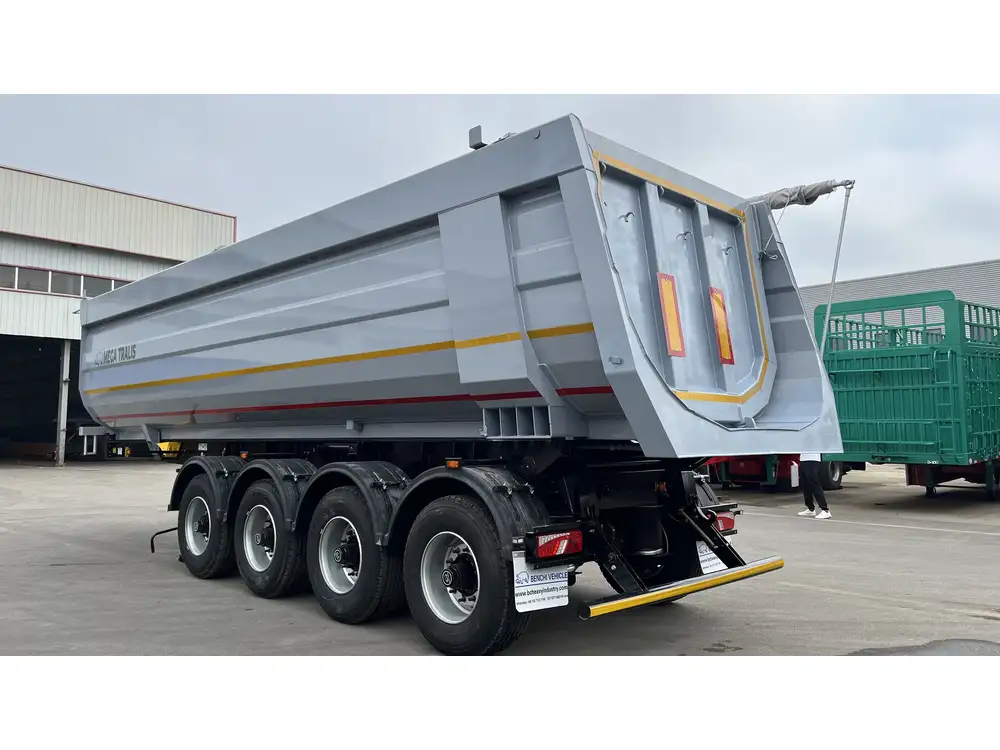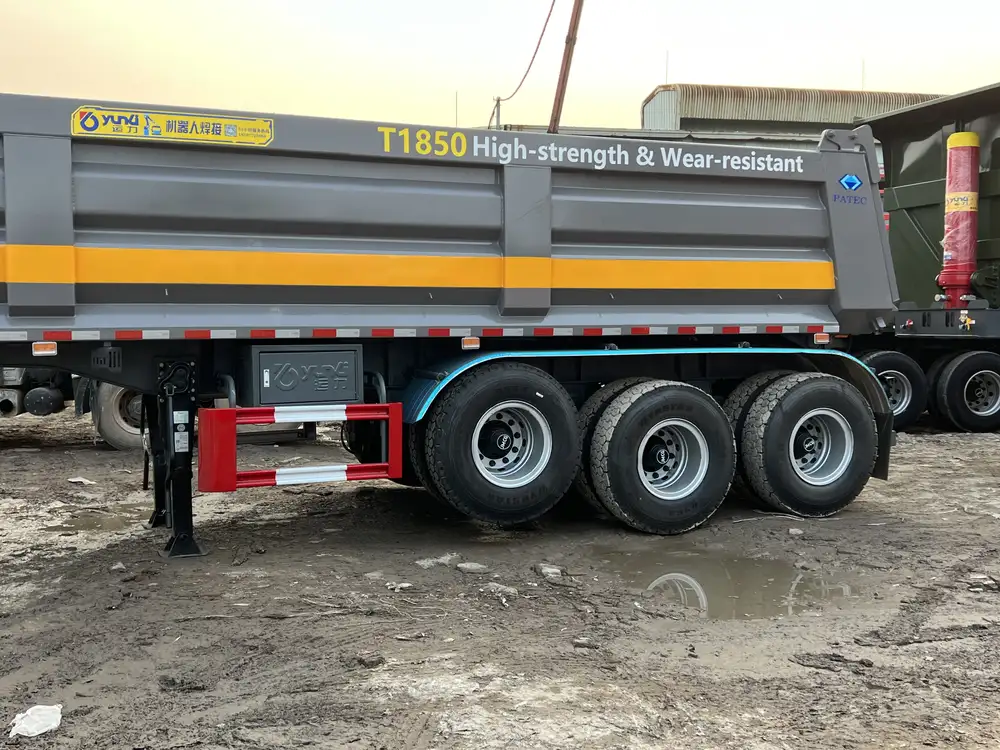Measuring a flatbed trailer accurately is crucial for a variety of applications, whether for purchasing, leasing, transporting goods, or ensuring compliance with local regulations. In this detailed guide, we will explore the essential steps to measure a flatbed trailer effectively. We will also discuss common pitfalls, key measurements, and considerations that can impact the overall functionality of your flatbed trailer.
Understanding the Basics of Flatbed Trailers
Flatbed trailers are versatile vehicles used primarily for transporting various types of cargo. They have a level, open deck without sides or a roof, enabling easy loading and unloading. These trailers come in various sizes and configurations to accommodate different loads. Understanding the basic structure and purpose of a flatbed trailer is the first step in measuring one accurately.
Key Components of Flatbed Trailers
- Frame: The main structure that supports the trailer. It is usually made of steel or aluminum.
- Deck: The flat surface where cargo is placed; it can be made of wood, metal, or composite materials.
- Axles: The metal rods that connect wheels to the trailer frame, allowing for movement.
- Suspension: The system that maintains the trailer’s stability while loaded, ensuring a smooth ride.
- Kingpin: The pivot point connecting the trailer to the truck; crucial in determining length measurements.

Purpose of Accurate Measurements
Accurate measurements ensure that your trailer can comply with regulations, fit within loading parameters, and provide safe transportation. Improper measurements can lead to overloading, inefficiencies, and potential hazards on the road.
Key Measurements for Flatbed Trailers
When measuring a flatbed trailer, several critical dimensions must be recorded. These include length, width, height, and weight capacity.
1. Measuring the Length
The overall length of a flatbed trailer is typically one of the most crucial measurements.
- How to Measure: Use a measuring tape to determine the total length from the front of the trailer (including the kingpin) to the rear.
- Key Considerations: Ensure that the tape measure is straight and taut for the most accurate reading. Note that the standard length for many flatbed trailers can range from 20 feet to 53 feet.

2. Measuring the Width
Width is another essential measurement that often affects loading capabilities.
- How to Measure: Measure from the outer edge of one side rail to the outer edge of the opposite side rail.
- Typical Widths: Most flatbed trailers are either 8.5 feet or 102 inches wide, which is the maximum allowable width for most highways.
3. Measuring the Height
Height is typically measured to ensure that the trailer can pass under bridges and through tunnels.
- How to Measure: Place the measuring tape from the ground to the highest point of the trailer, including cargo if it is to be loaded.
- Normal Heights: Standard trailer height is typically around 13.5 feet.
4. Measuring the Deck Height
The deck height is critical for loading and unloading operations.
- How to Measure: Measure from the ground to the deck of the trailer.
- Standard Measurements: Deck height generally ranges from 48 to 60 inches depending on the trailer configuration.

5. Weight Capacity
Understanding a trailer’s weight capacity is essential for safe transport and compliance with regulations.
- How to Determine: Weight ratings, often specified on a sticker or plate, include Gross Vehicle Weight Rating (GVWR), which represents the maximum weight a trailer can safely carry, including its own weight.
- Importance of Compliance: Always ensure that the total load does not exceed the specified weight limit, as this can lead to dangerous situations on the road.
Tools Required for Measurement
Ensuring accurate measurements requires the right tools. Here’s a shortlist of essential tools for measuring a flatbed trailer:
| Tool | Purpose |
|---|---|
| Measuring Tape | For measuring lengths, widths, heights |
| Level | To check the flatness of the trailer deck |
| Scale | To measure weight capacity |
| Calculator | For converting units and calculating load weights |
| Notepad or Digital Device | For taking notes and recording measurements |
Common Mistakes When Measuring Flatbed Trailers
Avoiding mistakes is critical for ensuring accurate measurements. Here are several common pitfalls to watch for:
- Not Using a Straight Edge: Failing to measure along a straight line can introduce errors.
- Ignoring Load Variability: Ensure measurements account for potential variations when loading different cargo sizes and weights.
- Rushing the Process: Take your time to ensure precision and accuracy, as hasty measurements often lead to discrepancies.
- Overlooking Local Regulations: Different states or municipalities may have specific regulations concerning trailer sizes, which can significantly affect your operations.

Comparison of Flatbed Trailers
Different types of flatbed trailers are available, each designed for unique applications and requirements. Here’s a quick comparison of common types:
| Trailer Type | Description | Ideal Use |
|---|---|---|
| Standard Flatbed | Open deck for loading various materials | General-purpose transport |
| Step Deck | Two levels; lower deck allows taller loads | Transport of high-load items |
| Drop Deck | Designed for low loading height | Ideal for heavy machinery |
| Extendable Flatbed | Can be lengthened for longer loads | Useful for oversized cargo |
| Conestoga Trailer | Enclosed with a tarp for weather protection | Protects cargo while allowing access |
Factors Impacting Flatbed Trailer Efficiency
Measuring is only one aspect of maximizing the utility of a flatbed trailer. Here are other considerations that can influence efficiency:
- Load Distribution: Proper load distribution affects stability and safety. Load should be evenly spread across the deck to prevent swaying.
- Aerodynamics: Consideration of the load shape can impact fuel efficiency and handling. Products with streamlined shapes require less energy to transport.
- Tire Pressure: Regular checks of tire pressure and condition are vital for safety and efficiency during transport.
- Maintenance: Regular maintenance checks can prevent breakdowns and contribute to the longevity of the trailer.
Tips for Maintaining Accurate Measurements
To ensure accurate measurements and prolong the lifespan of your flatbed trailer, consider these best practices:
- Regular Measurement Checks: Measurement should be done regularly, especially after any modifications or repairs.
- Consult Manufacturer Specifications: Always refer to the manufacturer’s guidelines for precise measurements related to the specific model of your flatbed trailer.
- Use a Professional Calibration Service: If measuring for critical applications, consider using a professional service to ensure complete accuracy.

Conclusion
Properly measuring a flatbed trailer is essential for ensuring safety, compliance, and operational efficiency. By systematically evaluating the length, width, height, deck height, and weight capacity, you can make informed decisions about your trailer usage. Investing in the right tools, avoiding common mistakes, and adhering to best practices will not only enhance your measurements but also ensure the efficient performance of your flatbed trailers.
By following this comprehensive guide, manufacturers and users alike can secure the necessary accuracy in trailer measurements, balancing safety, efficiency, and operational effectiveness in their transportation endeavors. Make your measurements count—optimize your flatbed trailer experience today!



